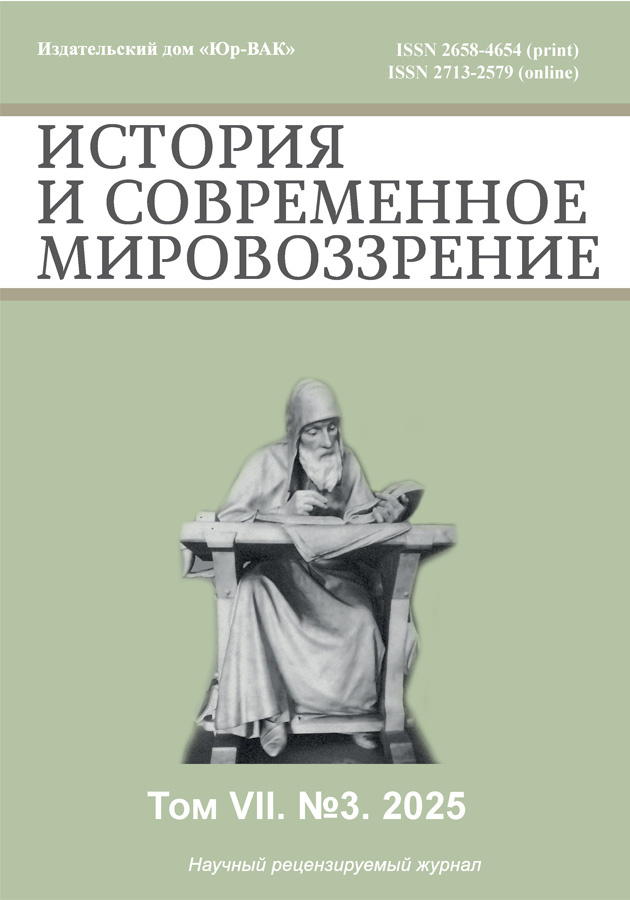Building of the university system in Yekaterinburg-Sverdlovsk in 1917–1920: achievements and failures of experimentation
- Авторлар: Speransky A.V.1
-
Мекемелер:
- Institute of History and Archeology of the Ural Branch of the Russian Academy of Sciences
- Шығарылым: Том 7, № 3 (2025)
- Беттер: 49-54
- Бөлім: HISTORY OF RUSSIA
- URL: https://journals.eco-vector.com/2658-4654/article/view/695626
- DOI: https://doi.org/10.33693/2658-4654-2025-7-3-49-54
- EDN: https://elibrary.ru/epsrde
- ID: 695626
Дәйексөз келтіру
Аннотация
The article analyzes the process of building a system of higher education institutions in Yekaterinburg (since 1924 — Sverdlovsk) in the period from 1917 to the end of the 1920s. The article notes that the idea of creating a higher education institution in the city was hatched by local political and financial industrial elites from the XVIII century and was put into practice only at the beginning of 1917 before the February Revolution, which overthrew Emperor Nicholas II, by whose decree the first university in the Urals, the Mining Institute, was established. The article shows that the formation of the urban university system in the conditions of revolution and civil war, which established Soviet power in Russia, was extremely contradictory. Having gained a foothold in the power structures of Yekaterinburg and Sverdlovsk, the Bolsheviks, following the orders of the central authorities, constantly reorganized the network of higher educational institutions in accordance with the prevailing ideological and political views and the socialist transformations that began on their basis. The article concludes that permanent experimentation, expressed in the ill-conceived merging of heterogeneous institutions into a single whole, and in the “proletarization of universities”, which limited the admission of “class alien elements”, as well as in the unjustified persecution of “bourgeois professors”, and in curtailing the training of humanitarian specialists, etc., led to a decrease in the level of teaching and a large dropout rate of students, which led to the small number and insufficient professional training of the student graduates of the 1920s.
Толық мәтін
Авторлар туралы
Andrey Speransky
Institute of History and Archeology of the Ural Branch of the Russian Academy of Sciences
Хат алмасуға жауапты Автор.
Email: avsperansky@mail.ru
SPIN-код: 9138-0510
Dr. Sci. (Hist.), Professor, Honored Worker of Science of the Russian Federation, Head of Center for Political and Socio-Cultural History
Ресей, YekaterinburgӘдебиет тізімі
- Glavatsky M.E. History of the birth of the Ural University. Ekaterinburg, 2000. 240 p. (in Rus.).
- Dashkevich L.A. Development of higher education in the Urals: search by authorities and civil society. Education and Science. 2015. № 4 (123). Pp. 131–141. (in Rus.).
- Igoshev B.M., Popov M.V., Elisafenko M.K., Suvorov M.V. History of the development of pedagogical education in Ekaterinburg (1871–1930). Ekaterinburg: [without a publisher], 2013. 273 p. (in Rus.).
- Maslennikova V.M. Creation of the Mining Institute. Bulletin of the Ural State Mining University. 2013. Issue 4 (32). Pp. 101–104. (in Rus.).
- Filatov V.V. “So Be It”: Essays on the history of the Ural State Mining University. Ekaterinburg: UGMU Publishing House, 2014. 521 p. (in Rus.).
- Shorin A.G. Two years that we forgot (Ural Mining Institute in 1917–1919). Bulletin of the Ural State Mining University. December 2016. Issue 4(44). P. 105–108. (in Rus.).
- Shorin A.G. Article about Pyotr Petrovich von Weymarn for the Russian Wikipedia. Bulletin of the Ural State Mining University. June 2016. Issue 2 (42). Pp. 97–100. (in Rus.).
Қосымша файлдар









